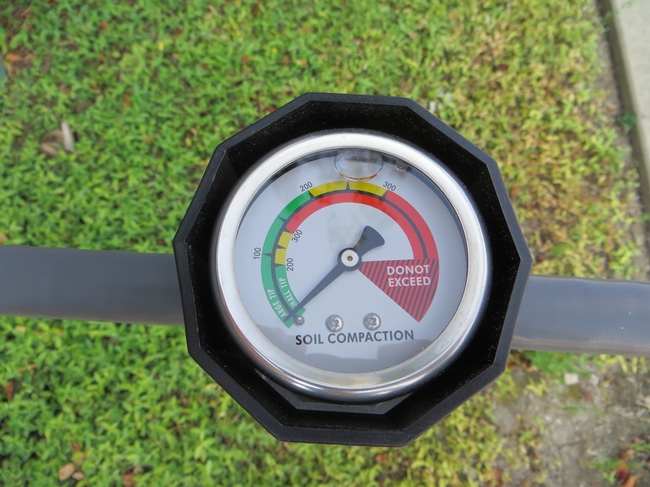Last month, I made a couple farm calls in the Delta to help with questions regarding soil, water, salinity, and compaction. The first was to an alfalfa field along the Sacramento River, near Rio Vista. The growers had been monitoring the Department of Water Resources salinity data for the river from a station near their intake. The salinity of the water was fluctuating heavily with the tide. The electrical conductivity (EC) was sometimes higher than 5 dS/m, or 3200 ppm, but other times it was lower than 0.5 dS/m, or 320 ppm. The growers use sprinkler irrigation, and they were worried that irrigating with this water would harm the alfalfa crop, or worse, reduce the agricultural longevity of the soil. The soil is a Valdez silt loam and is well-drained. Dan Putnam, alfalfa specialist at UC Davis, Daniele Zaccaria, irrigation specialist at UC Davis, and I visited the field, and I took some soil samples to analyze the salinity. The growers had soil moisture meters in the field that were showing good moisture down to between 1-2 feet but that the soil was quite dry below 2 feet. The soil salinity profile reflected the moisture profile, with good leaching within the top 2 feet but a build-up of salts in the third and fourth foot levels. The plan is for the growers to follow-up with us regarding the amount of water that is being applied with each irrigation and the average EC of the water sprinkled on the field. The jury is still out on this case, but our hunch is that the grower could be applying more water per irrigation, or perhaps irrigating twice per cutting. Since this is a well-drained soil, we suspect that the higher volume of water would still infiltrate well and would help to get more water lower in the profile. This, in turn, would help to leach the salts deeper into the soil profile and probably improve yield as well. For more information on irrigation scheduling and soil moisture monitoring in alfalfa and pasture, see this article.

These two farm visits illustrate the importance of resource management in the Delta, staying in tune with soil and water characteristics and how they influence crop production. In the first case, salinity was the issue, and it was important to understand how to maintain production without compromising future production with long-term salinity problems. In the second case, we were questioning whether compaction was hindering production by pushing back the growing season. Diagnosing problems on the farm and coming up with workable solutions is challenging. Sometimes we can figure out the problem fairly conclusively, but other times we can only eliminate improbable causes. UC Cooperative Extension farm advisors appreciate your trust in us to help you find those workable solutions.